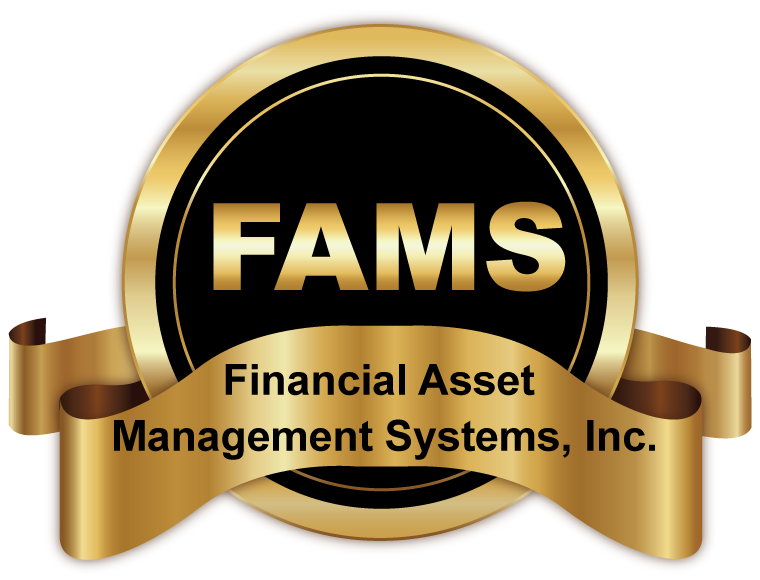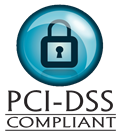If you need the balance of your defaulted loan placed with FAMS, you can obtain this information by logging into the
FAMS payment portal. You will need your FAMS ID and the zip code we have on record to authenticate. If you do not know your FAMS ID, you will need to call
back to top
One option for getting out of default is repaying your defaulted student loan in full. FAMS offers a variety of convenient
payment methods to make this easier for you.
back to top
After you graduate, leave school, or drop below half-time enrollment, you have six or nine months before you begin repayment. You will receive information about repayment and will be notified by your loan provider of the date loan repayment begins.
If you default on your student loan, the maturity date of each promissory note is accelerated making payment in full immediately due, and you are no longer eligible for any type of deferment or forbearance. Continued failure to repay a loan in default may lead to several negative consequences for you over the long-term including but not limited to garnishment of your wages, offset of your federal and/or state income tax refunds and any other payments, as authorized by law, and losing your eligibility for other federal loans such as FHA or VA.
However, there are now more ways than ever before to repay your defaulted student loan and certain programs can even remove your loan from its defaulted status. Determining which repayment option that is right for you depends your objective.
I want to pay my defaulted student loan in monthly payments that are affordable to me.
- FAMS is authorized to accept regular monthly payments that are both reasonable to the agency and affordable to you. Call FAMS at and one of our agents will assist you with determining a repayment amount that is right for you
I want to reestablish my eligibility for additional federal student aid and go back to school."
It is easy to restore your eligibility to receive additional Title IV federal financial aid. Your options are as follows:
- Repay or satisfy the loan in full.
- Make six agreed-upon monthly payments over a six month period. Your payment amount must be approved in advance by . Every qualifying payment must be received between 15 days before or 15 days after the due date, and you cannot make all six payments as a single lump sum payment. Once your eligibility to receive additional federal financial aid has been restored after making six consecutive monthly payments, you must continue to make timely monthly payments to maintain your eligibility or else it will be permanently lost until the debt is resolved entirely. In other words, you may qualify for this program only once.
- Rehabilitate your loan through the loan rehabilitation program.
- Consolidate your loan through the Student Loan Consolidation Program.
Since defaulted student loans have no statute of limitations for enforceability, you would remain ineligible for additional federal financial aid until you complete one of the options mentioned above.
I'm applying for a HUD (FHA) or VA loan and I don't qualify because of my defaulted student loan.
- Your options for reinstating your eligibility to receive a HUD (FHA) or VA loan are: repay or satisfy the loan in full; rehabilitate your loan through the Loan Rehabilitation program; or consolidate your loan through the Student Loan Consolidation Program. Since defaulted student loans have no statute of limitations for enforceability, you would remain ineligible to receive a HUD or VA loan until you complete one of the options mentioned above.
My credit record is tarnished because of my defaulted student loan. Is there anything that I can do to improve my credit record?"
- Failure to repay your defaulted student loan can be damaging to your credit record. In fact, consumer reporting agencies may continue to report an account for seven years from the default date. However, there are several things that you can do to at least partially, and in some cases, fully restore your credit record. Your options for bettering your credit report include: repay or satisfy the loan in full; rehabilitate your loan through the loan rehabilitation program or consolidate your loan through the Loan Consolidation Program.
What address do I send my payments to?
If you have a defaulted student loan held by , you can mail a check or money order to the address below:
Please include your name, address, social security number and FAMS ID number (if available) with your payment.
- Make personal check, money order or cashiers check payable to FAMS
- Mail your payment to:
back to top
Benefits of Rehabilitation
- Reduced monthly payments for borrowers experiencing financial hardship.
- Tax-offsets (IRS withholding of tax refunds) end.
- Wage garnishment discontinues.
- Loans on the credit bureau no longer show as defaulted; all negative trade lines are removed.
- Eligibility for Title IV assistance (federal student aid) and the ability to return to school can be reinstated.
- Eligibility for loan deferment and forbearance can be reinstated in order to postpone payment on new loans.
- Payments made during rehabilitation count toward payments on the new loan.
Note: Benefits do not begin until the rehabilitation is complete. The rehabilitation is complete when the required payments have been made, the rehabilitation paperwork that has been sent to you has been completed correctly, signed, and returned, and the account has been removed from default and purchased by an eligible lender.
How Rehabilitation Works
Student loan rehabilitation is an opportunity to clear the default on a federal student loan and regain eligibility for federal student aid.
FAMS will work with you to establish a satisfactory payment arrangement. After nine on-time, voluntary payments made according to your agreement, the loan can be rehabilitated and the default status removed. FAMS requires borrowers to set up 12 monthly payments to allow time for the loans to be purchased by the new lender. Payments obtained by state offsets, federal offsets, wage garnishments, trustee payments or income or asset executions will not satisfy the rehabilitation requirements.
The rehabilitation is complete when the required payments have been made, the rehabilitation paperwork that has been sent to you has been completed correctly, signed, and returned, and the account has been removed from default and purchased by an eligible lender.
Frequently Asked Questions
What happens if I a miss a payment?
You cannot successfully complete your rehabilitation unless you make at least nine, on-time, full monthly payments.
Can I change my payment schedule?
It may possible to change your payment schedule, however, you will have to contact a FAMS agent for approval. Approvals are assessed on a case-by-case basis.
Can I request a rehabilitation if I already had one?
If you completed the Rehabilitation program prior to 8/14/2008, it will not affect your eligibility.
If you completed the Rehabilitation after 8/14/08, you are no longer eligible.
If you began a rehabilitation, but did not complete it, you may still be eligible. Contact FAMS for more information.
Can I rehabilitate my private loans?
This option is not available through FAMS. Contact your loan provider to discover if this an option for you.
Will my payments go up after I complete my rehabilitation?
Possibly. Once your rehabilitation is complete, the default status is removed and the loan is returned to a loan servicer. At that time you can request a repayment plan that meets your financial needs, or request deferment or forbearance.
Does wage garnishment count towards my rehabilitation?
No. Payments secured from you on an involuntary basis, such as through wage garnishment or tax offset, cannot be counted toward your rehabilitation payments.
How long after the rehabilitation is complete will tax offset end?
After the final rehabilitation payment has been made the account must be removed from default, and the U.S. Treasury records must be updated by before tax offset will end.
Contact FAMS if you would like to request rehabilitation of your student loans.
back to top
You have the option for getting out of default through loan consolidation. Loan consolidation allows you to pay off the outstanding combined balance(s) for one or more federal student loans to create a new single loan with a single monthly payment.
A defaulted federal student loan may be included in a consolidation loan after you've made arrangements with ED and some instances, several voluntary payments. Usually, this means making at least three consecutive, voluntary, and on-time payments prior to consolidation.
Note: Outstanding collection cost on your current defaulted loans will be capitalized at a rate of 18.5%. This amount is then added to your principal balance of your new consolidation loan.
back to top
Student loan consolidation is the act of combining multiple loans into a single debtwith a single (often lower) payment.
back to top
Most borrowers are eligible for loan consolidation. However, some loans are ineligible. Contact FAMS if you have any questions regarding your eligibility.
back to top
Consolidation gives borrowers a chance to get their loans out of default. This program may not require monthly payments with our office, but once loans are consolidated, payments to William D Ford will start. Once the consolidation is complete and the loans are out of default, borrowers will be eligible for deferment, forbearance, and Title IV assistance (Financial Aid). Consolidation provides the following key benefits to borrowers:
- Borrowers are safeguarded from future annual interest rate adjustments.
- A single point of contact and only one monthly payment for all loans, which is often less than the combined total of all loan payments.
- An opportunity to lower monthly payments by extending beyond the maximum of 10 years depending on the balance.
- No application fees or repayment penalties.
- Interest on student loans can be tax deductible.
- Note: The borrower will no longer be listed as currently in default on their credit reports, and no longer subject to tax offsets, wage garnishments, or other collection efforts. Once borrowers are out of default they can choose one of four income-based repayment plans
a) IBR: Income-based repayments:
To initially qualify for IBR, you must prove a financial hardship. The monthly payment is determined based on borrower's income and family size. With both IBR and ICR, borrower's calculated monthly payment may not cover the full amount of interest that accrues on loans each month. Under IBR, the government pays the remaining unpaid accrued interest on subsidized loans for up to three years.
b) ICR-Income-contingent repayment:
There is no partial financial hardship requirement for ICR. The monthly payment under ICR takes into account borrower's total loan debt in addition to income and family size. The required monthly payment under ICR is generally higher than under IBR. Under ICR, a borrower is responsible for paying all of the interest that accrues on borrower's loans.
c) Extended Repayment
Stretches a loan repayment period from 10 to between 12 and 30 years (depending on the loan balance).
d) Graduated Repayment
Allows payments at a lower monthly amount and then gradually increases that repayment amount every two years
| Loan Type |
Balance Range |
Payback Term |
Interest Rate |
| Non-Consolidation |
All - All |
10 Year |
On Loan |
| Consolidation |
$0 - $7,499 |
10 Year |
On Loan |
|
$7,500 - $9,999 |
12 Year |
On Loan |
|
$10,000 - $19,999 |
15 Year |
On Loan |
|
$20,000 - $39,999 |
20 Year |
On Loan |
|
$40,000 - $59,999 |
25 Year |
On Loan |
|
$60,000 - Max |
30 Year |
On Loan |
back to top
Once all other repayment options have been eliminated, the borrower may qualify for consolidation of their loans. The consolidation program requires a William D Ford consolidation application.
Monthly payments may not be required for the borrower to consolidate the loans, but they are prefered in order to ensure the account stays with our office during the whole consolidation process.
The consolidation application is for the most part filled out entirely and sent to the borrower. ThSe borrower is required to check over the information on the application and sign and date four pages. One of the four pages that require a signature is the Permission to Verify form (PTV). This gives FAMS permission to speak on the borrower’s behalf with William D Ford to discuss any issues that may arise during the consolidation process.
Once William D Ford receives the application, there are 4 phases that each application will follow:
- First is the certification phase- this phase lets FAMS know that William D Ford (WDF) has received your application and they are reviewing the information.
- Second is the LVC Quote- after WDF verifies information on the application, they will send a loan verification certificate to your current loan holder to request the payoff amount to close the account.
- Third is the Summary Phase- this phase occurs once WDF receives a response back from your loan holder that they have certified the amount neccessary to pay off your defaulted student loans.
- Fourth is the Funding Phase- FAMS recieves confirmation that your defaulted loans are about to be consolidated.
A normal consolidation takes on aproximately 60 - 90 days to complete from the date that FAMS receives your application until the new loan funds..
back to top
Carefully consider whether loan consolidation is the best option for you. Loan consolidation can greatly simplify loan repayment by centralizing your loans to one bill and can lower monthly payments by giving you up to 30 years to repay your loans. You might also have access to alternative repayment plans you would not have had before, and you'll be able to switch your variable interest rate loans to a fixed interest rate.
However, if you increase the length of your repayment period, you'll also make more payments and pay more in interest. Compare your current monthly payments to what monthly payments would be if you consolidated your loans.
You also should consider the impact of losing any borrower benefits offered with the original loans. Borrower benefits from your original loan, which may include interest rate discounts, principal rebates, or some loan cancellation benefits, can significantly reduce the cost of repaying your loans. You might lose those benefits if you consolidate.
Once your loans are combined into a Consolidation Loan, they cannot be removed. The loans that were consolidated are paid off and no longer exist. Take the time to study the pros and cons of consolidation before you submit your application. Review the Consolidation Checklist to see if consolidation is the best option for you.
back to top
Generally, you are eligible to consolidate after you graduate, leave school, or drop below half-time enrollment.
back to top
To apply for loan consolidation
Contact FAMS and we will assist you.
back to top












